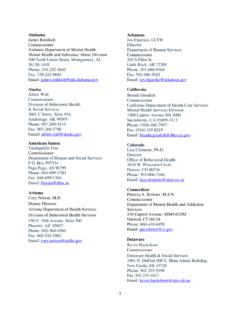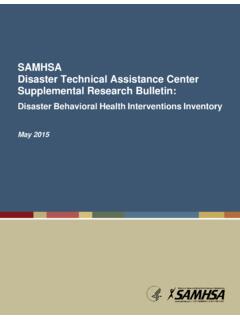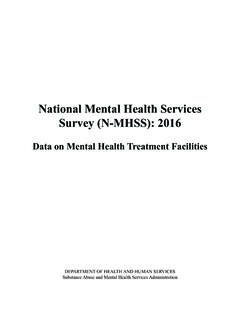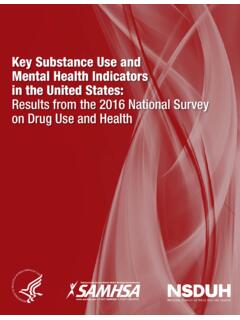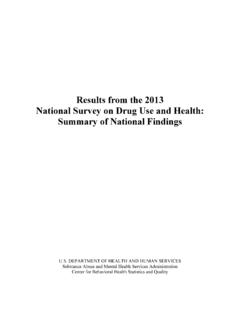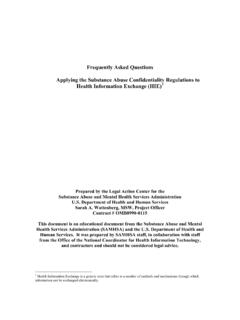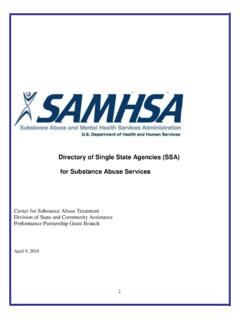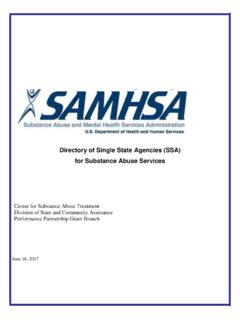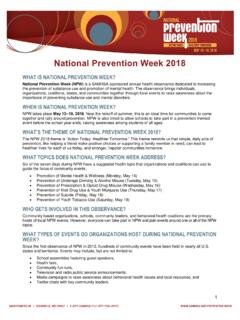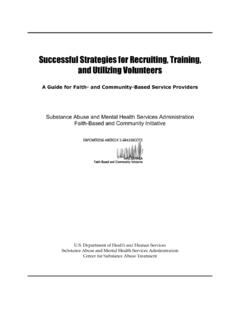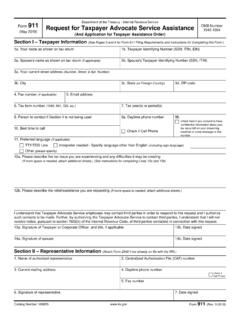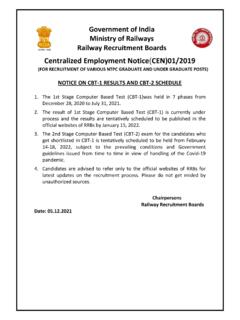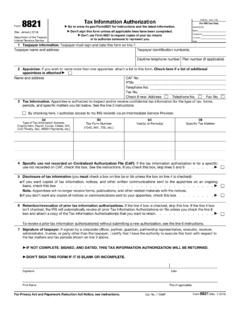Transcription of Model Plan for a Comprehensive Drug-Free Workplace …
1 Model Plan for a Comprehensive Drug-Free Workplace Program 1. Table of Contents Supplement and Attachments .. 3. Acknowledgements .. 4. Foreword .. 5. I. Introduction .. 6. II. Definitions .. 9. III. Employee Assistance Programs .. 11. IV. Supervisory 13. V. Employee Education .. 14. VI. Special Duties and 15. VII. Notice .. 19. VIII. Finding of drug Use and Disciplinary Consequences .. 21. IX. Random 24. X. Reasonable Suspicion Testing .. 25. XI. Applicant Testing .. 26. XII. Additional Types of drug Testing .. 27. XIII. Test Procedures in General.
2 28. XIV. Records and 30. XV. Position Titles Designated for Random Testing .. 33. APPENDIX A .. 34. APPENDIX B .. 40. 2. Supplement and Attachments Substance Abuse and Mental Health Services Administration Rockville MD 20857. Since the publication of the Model Plan for a Comprehensive drug free Workplace Program in 1989, the following changes in language and implementation practice have been directed by the Office of Personnel Management and the Interagency Coordinating Group (ICG). Executive Committee acting for the Office of National drug Control Policy, in coordination with the Department of Justice.
3 Guidance for the selection of Testing Designated Positions was issued by the ICG Executive Committee on January 24, 1992 and was supplemented by a June 10, 1993 Department of Justice letter (copies of both attached). The Mandatory Guidelines for Federal Workplace drug Testing Programs, originally issued on April 11, 1988, have been revised and were reissued on June 9, 1994 (copy attached). A. References and Authorities Under Section I., Introduction, item G., References, 1., Authorities, letter e., "as revised (1994)" should be inserted after "(1988).
4 ". Under item G., References, 2, Guidance, citations of Office of Personnel Management (OPM). Federal Personnel Manual (FPM) Letters should be deleted since the Federal Personnel Manual no longer exists. B. Definitions Under Section II., Definitions, item H, Employees in Sensitive Positions, sub-item 1., the phrase ".. under Chapter 731 of the Federal Personnel Manual" should be deleted since the Federal Personnel Manual no longer exists. C. Range of Consequences Under Section VIII., Finding of drug Use and Disciplinary Consequences, item C.
5 , Range of Consequences, a subparagraph 7, "Reducing the employee in pay or grade" should be added as a possible disciplinary action. D. Reasonable Suspicion Testing The following new paragraph should be inserted ahead of the present paragraph under Section X., Reasonable Suspicion Testing, item A., Grounds: "Reasonable suspicion testing may be required of any employee in a position which is designated for random testing when there is a reasonable suspicion that the employee uses illegal drugs whether on or off duty. Reasonable suspicion testing may also be required of any employee in any position when there is a reasonable suspicion of on-duty use or on- duty impairment.
6 ". 3. E. Applicant Testing Under Section XI., Applicant Testing, the testing of applicants for Testing Designated Positions is strongly encouraged and preferred by the Interagency Coordinating Group, Executive Committee. Testing of applicants for other positions remains within Agency discretion. F. Accident or Unsafe Practice Testing Under Section XII., Additional Types of drug Testing, the following new paragraph A should be substituted for the present paragraph A., Accident or Unsafe Practice Testing: G. Injury, Illness, Unsafe, or Unhealthful Practice Testing [Agency] is committed to providing a safe and secure working environment.
7 It also has a legitimate interest in determining the cause of serious accidents so that it can undertake appropriate corrective measures. Post-accident drug testing can provide invaluable information in furtherance of that interest. Accordingly, employees may be subject to testing when, based upon the circumstances of the accident, their actions are reasonably suspected of having caused or contributed to an accident that meets the following criteria: 1. The accident results in a death or personal injury requiring immediate hospitalization; or 2.
8 The accident results in damage to government or private property estimated to be in excess of $10,000. If an employee is suspected of having caused or contributed to an accident meeting the above criteria, the appropriate supervisor will present the facts leading to this suspicion to the [Agency Official] for approval. Once approval has been obtained and arrangements made for testing, the supervisor will prepare a written report detailing the facts and circumstances that warranted the testing.". H. Privacy Assured Under Section XIII., Test Procedures in General, item B.
9 , Privacy Assured, the subparagraph 1 (a), " is being tested pursuant to Section X relating to reasonable suspicion testing;". should be deleted and the remaining subparagraphs re-lettered accordingly. [Prepared by the Division of Workplace Programs, Center for Substance Abuse Prevention, Substance Abuse and Mental Health Services Administration, Department of Health and Human Services, effective July 10, 1995, revised September 30, 1995.]. Acknowledgements This Model plan was developed by a Federal Interagency Coordinating Group composed of representatives from the Department of Health and Human Services, the Office of Personnel Management, and the Department of Justice and distributed to Federal agencies by the National drug Policy Board.
10 4. All material appearing in this volume is in the public domain and may be reproduced or copied without permission from the Institute or the authors. Citation of the source is appreciated. DHHS Publication No. (ADM)90-1635. Printed 1989 Reprinted 1990. Foreword Many private and non-Federal public sector employers are currently seeking advice and guidance in developing and implementing programs for achieving a Drug-Free Workplace . They are taking action because they have been stimulated by the realities of life in late 20th Century America: In spite of miraculous medical advances creating the possibility for good health and long life for more people than ever before, those possibilities are tragically wiped out in the individual lives crippled or destroyed mentally or physically by the use and effect of drugs.
